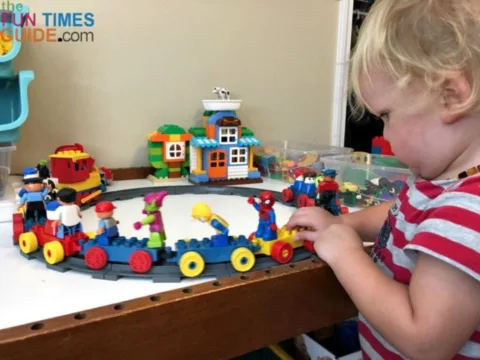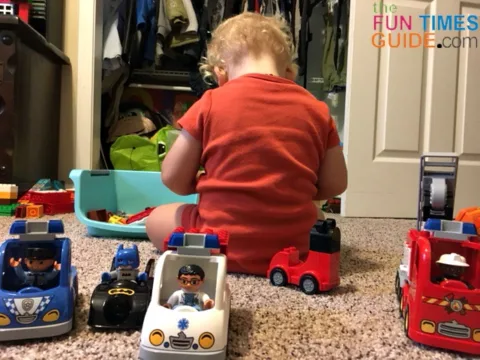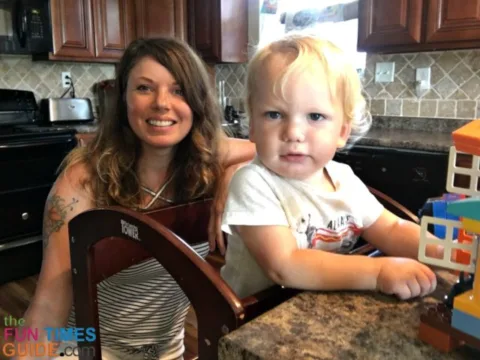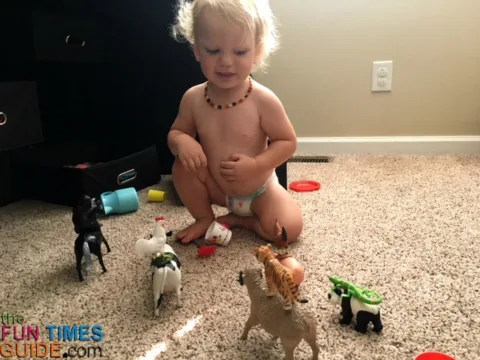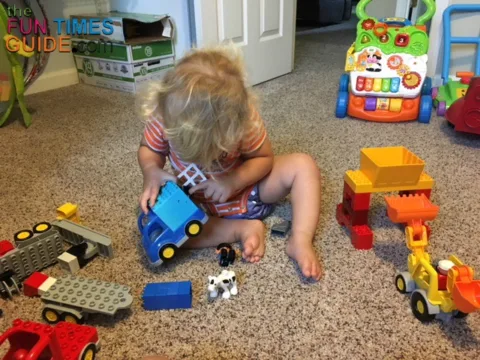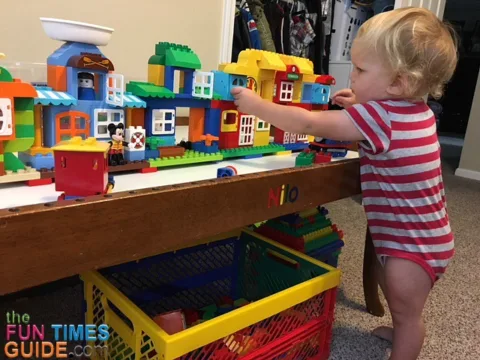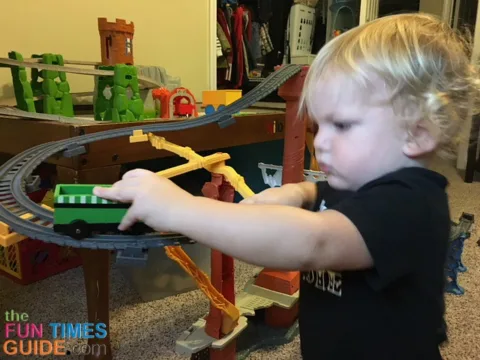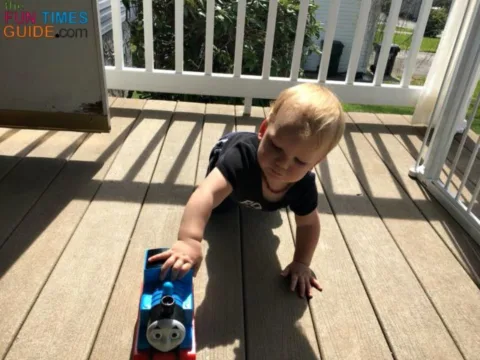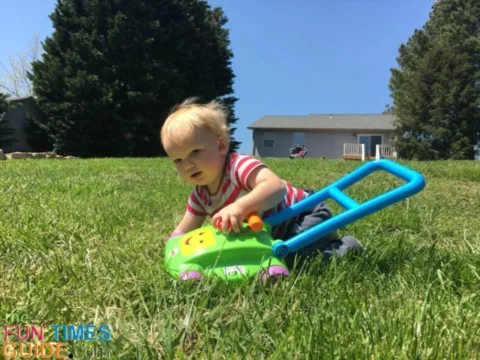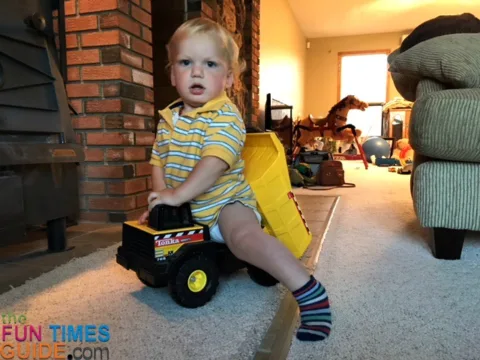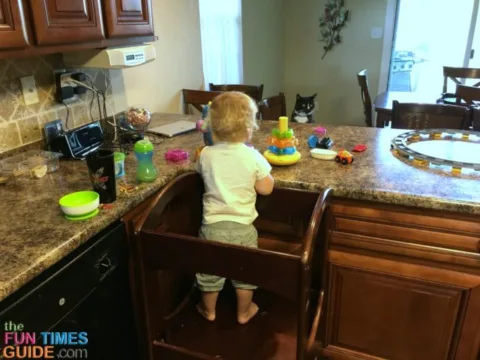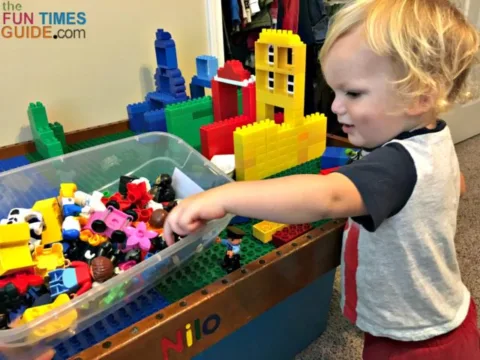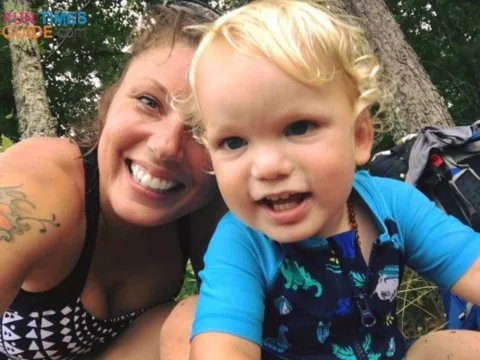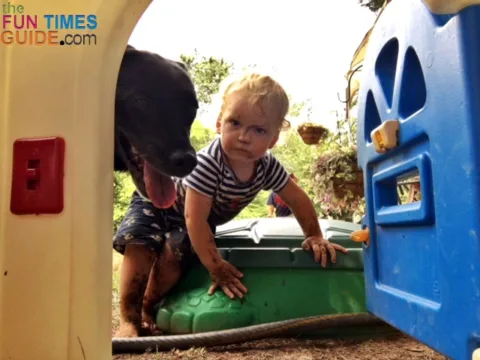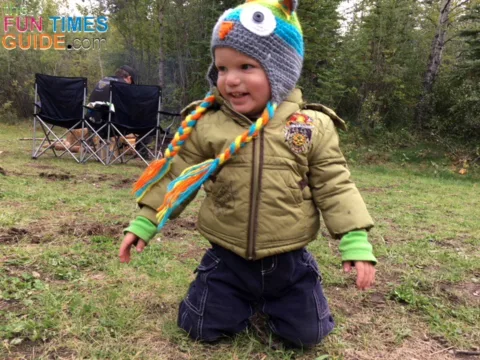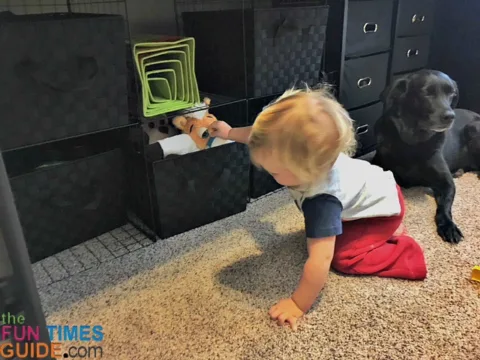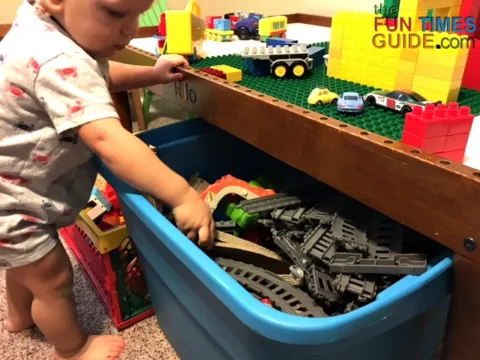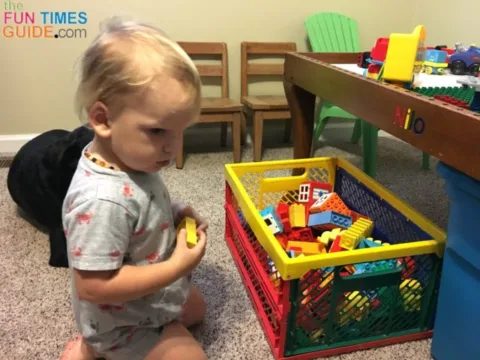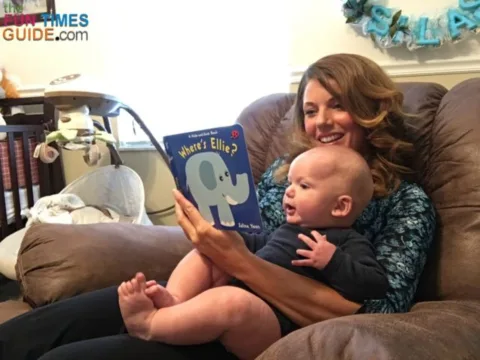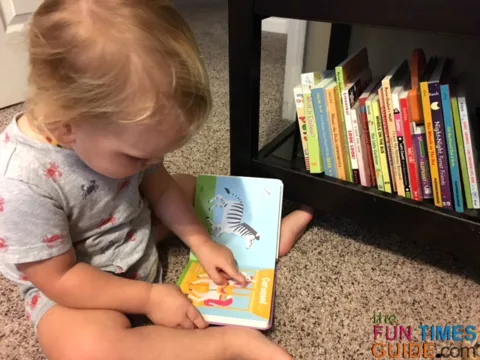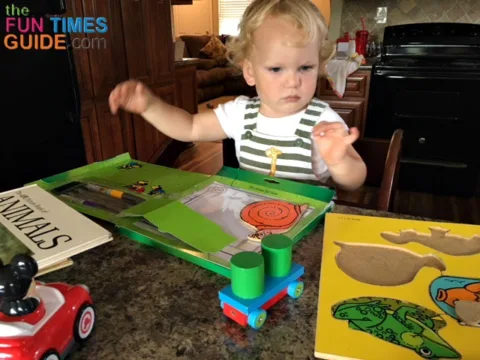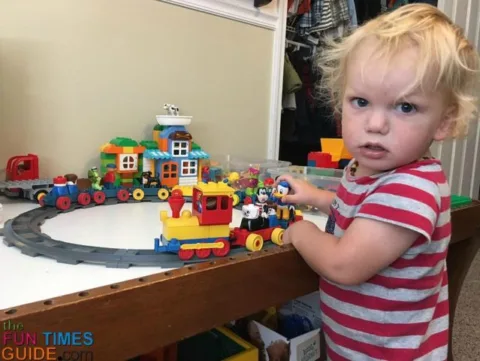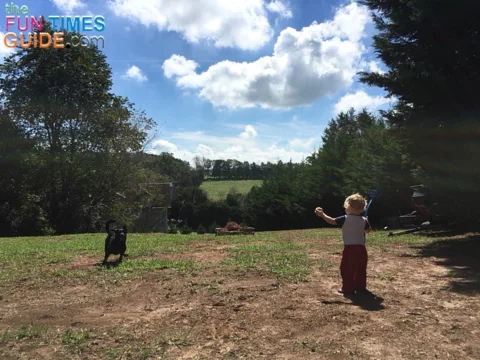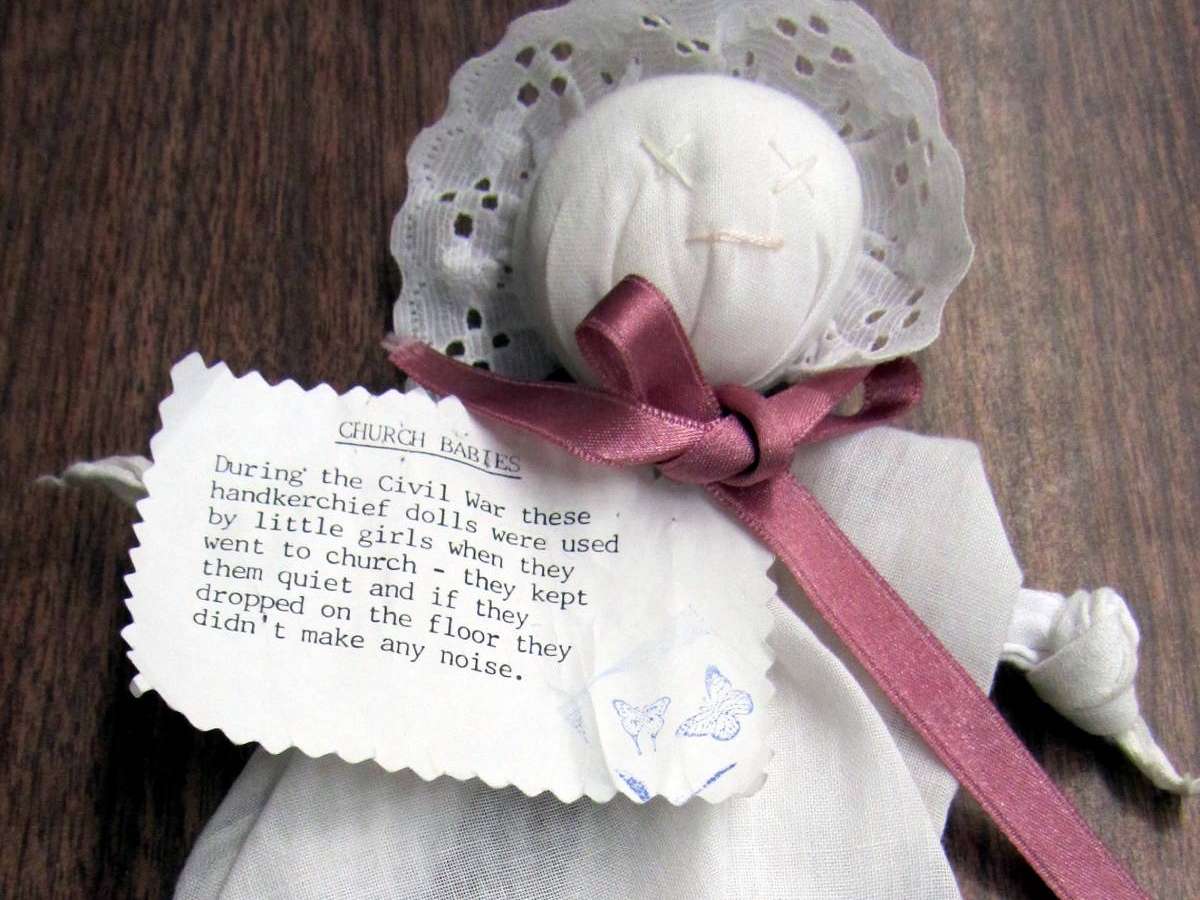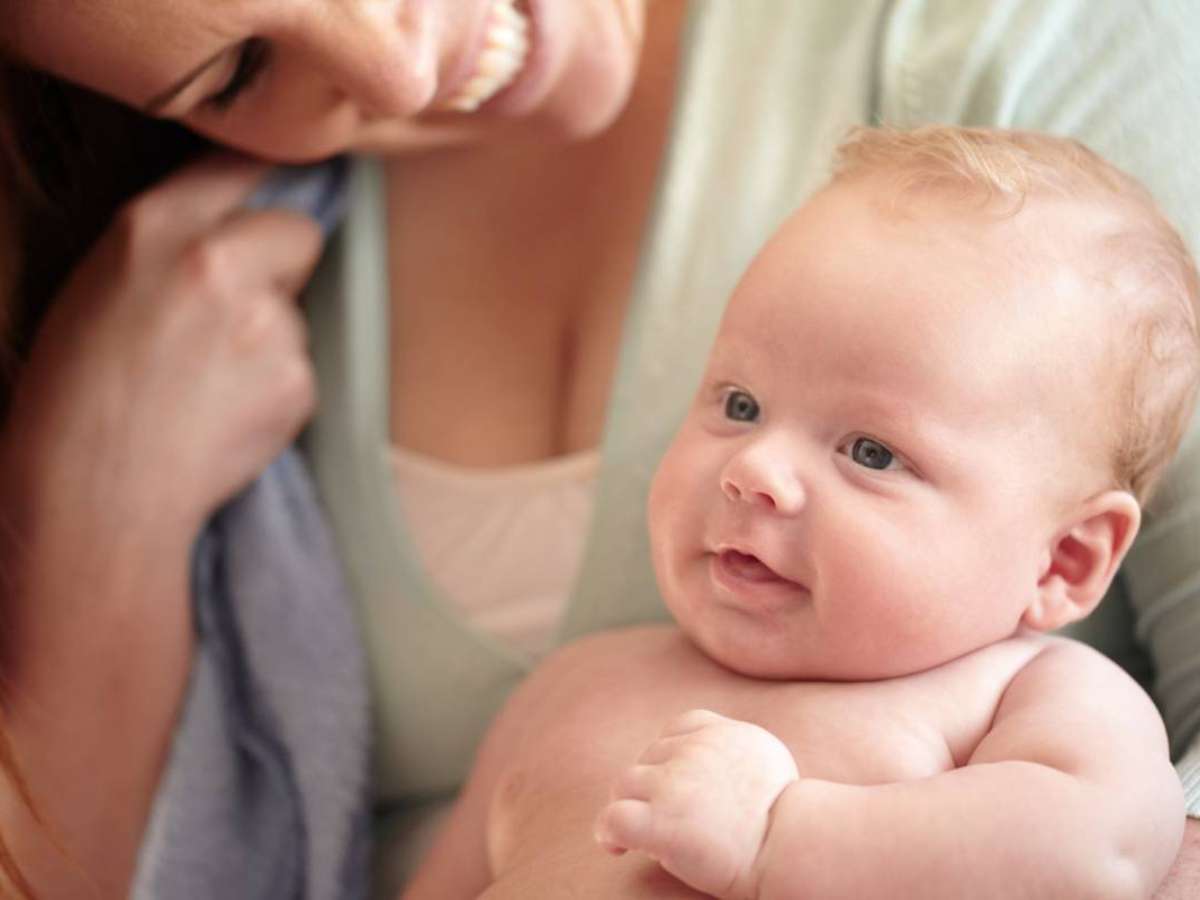Toys, toys, and more toys… I have a 20-month-old son, and I’m always amazed at the variety and amount of toys we have accumulated so far!
Currently, my son still loves any toys with wheels. He will literally hand me or his dad a toy car because he wants us to play with cars him. He would happily play cars all day if one of us would sit there and do so. In fact, he has always been fascinated with wheels — he would even flip over his early baby toys and study the mechanics of how the wheels spin.
Being a stay-at-home mom and my son’s number one go-to play pal, I simply cannot play cars all day. Besides the obvious of also needing to maintain a household, I like to switch up what we play with — because I prefer some educational, building type variety. (So I guess I’m partly to blame for the accumulated variety of toys — besides the cars — that we get into.)
I definitely try to get a handle on the flow of the toys coming in and out of our home and ways to organize them in order to keep them interesting and useful for my son.
See how we prevent too many toys from entering our home AND how to organize toys in such a way to avoid toy clutter…
The Problem With Too Many Toys
Here are 4 ways that having too many toys can become a problem:
- It can be overwhelming to choose what to play with
- It disrupts a child’s sense of order
- It can be a source of stress for both mom and baby
- It’s messy and chaotic.
So… how many toys should a child have?
When it comes to children’s toys, quality trumps quantity. Many parents often ask how many toys are too many toys for their child. Generally speaking, it’s not the number of toys that is most important, but how engaging and stimulating the toys are for your child. The best toys available are those meant to encourage engagement, inquiry, experimentation, communication, joint attention, and social interaction.
How To Prevent Having Too Many Toys
Following are my own personal strategies for reducing the number of toys my child acquires.
These tips have worked well to help us manage the neverending, constant flow of toys in our home:
#1 – Only buy used toys.
I rarely purchase any new toys for my son because, at this age, he gets bored with them or grows out of them too quickly.
If you’re patient, most times you can find the specific toy you’re looking for at a fraction of the price in gently used condition on Facebook Marketplace — or other sites like Craigslist. I’ve found used toys in excellent condition for my son from both.
Plus, buying toys at such a low price almost guarantees that I can turn around and sell them for what I paid for them once my son is done with them.
Then… I can re-invest the money and put it toward something else appropriate for his developmental phase!
#2 – Consider the value of each toy before bringing it into your home.
I try to consider the value and use of each toy that comes into our home ahead of time.
Even though I buy mostly used toys, I don’t just buy random toys — no matter how good the price is.
Since my son is still growing and developing so fast, I’m only looking for (and thoroughly researching) educational toys and ones which will aid in his next developmental phase.
I like to have a good variety of toys — and some toys that fit his current developmental phase at 20 months of age are:
- Thomas & Friends Trackmaster Train Tracks
- Duplos Characters & Duplos Building Blocks
- Magnetic Building Blocks
- Multi-Purpose Easel
- ZOOB Builderz Sets
…basically a variety of interactive toys to help develop his imagination and motor skills.
Thrifty shoppers can be particularly susceptible to stockpiling. “When my children were younger, I’d buy too many marvelous toys at garage sales for irresistibly great prices,” says Marilyn Thomsen, mother of Stephen, 13, and Julianne, 10. “I realized that a major part of managing the toy problem was managing myself.” —Parenting
#3 – Toy in, toy out.
As I acquire new toys and bring them into our home, I think about which toys need to go because my son no longer plays with them.
Every couple of months, I assess and reassess whether certain toys are being played with or if they’re just taking up space.
I will either donate the unused toy to a friend or someone who could use it. Depending on the toy and its condition, I may also list it on Facebook Marketplace, sell it, and re-invest the money into a different toy — as mentioned above.
As my son gets older, I will include him in on the conversation in deciding which toys stay, which toys to donate, and which toys he wants to sell to replace with different ones.
To help you decide which toys you should keep and which should go, ask yourself these questions:
- Do you love this toy? Does your child love it?
- Does your child get joy from this toy?
- Does the toy enrich your child’s life? How does your child use it — and why?
#4 – Create a wish list for your child.
Eventually, he will be the one communicating to me what he would like to see in his toy selection.
But for now, I keep a running list of toys, books, and more that I would like to eventually get for my son. It helps me remember — especially when I’m looking for a specific item to buy used!
A current wishlist is also handy to share with friends and family who want to give your child a gift for their birthday or Christmas. And it’s super easy to create a wishlist on Amazon and share with friends and family!
TIP: Asking for consumable gifts is a great way to reduce the number of toys entering your home.
#5 – Be careful not to overwhelm your child.
I’ve often made the mistake of giving my son too many new toys at once.
He can only play with one toy at a time.
Although he enjoys receiving a “shiny-new” toy just like any other kid, I try to space out giving him new toys as much as possible.
I also pay attention to key times when it would make the most sense to introduce new toys.
Here’s how to tell if your child is too overwhelmed by their toys… because sometimes less is more.
#6 – Get outside more.
Don’t forget about the biggest playroom that’s full of FREE toys available to us all… Mother Nature and the great outdoors!
I try to get my son outside as much as possible, when the weather permits. I have seen him just as happy to dig in dirt as he is to receive a shiny new toy!
My son loves to help me with yard work, digging up weeds, picking up rocks which surfaced, picking up yard debris, and more.
Some of the best things in life are free and right in front of us — if we take the time to look. (That said, I’m a realist… and thank goodness for toys on the days we are stuck inside!)
How To Organize Toys To Avoid Toy Clutter
#1 – Have a designated toy storage area.
It’s impossible to keep all the toys neatly tucked away 100% of the time. I’ve conceded to this fact, and the only time I will ever have a toy clutter free home will be when my son is napping — after I’ve just combed each room for every single toy straggler.
We’ve been keeping our toys somewhat organized in easily accessible storage drawers and storage bins in my son’s room. We keep similar toys (such as trains, cars, stuffed animals, etc.) separated into their own drawer or bin.
My son will pick a drawer, and we will play with those toys. When he decides to move onto another drawer or bin, I tell him we need to put the current toys away first. He seems to be catching on with my clean-up repetition, and he will help most times in putting the toys back into their bins.
I have found my son gets really distracted when there are too many toys out in the open — or within his line of vision. That’s why I’ve purposely kept most of the bins and drawers black (instead of see-through or bright colors) — to try not add any more distraction, after he has chosen a drawer or bin of toys to play with.
Having a toy bin area also helps me visually determine which toys are actually being played with the most.
#2 – Collect all of the toys at the beginning or end of each day.
In the mornings while my son is still sleeping, I collect the random toys which have been strewn about the house from the day before into a basket. I store the basket with accumulated toys in the guest room throughout the week.
I return the toys back to their designated storage areas at the end of each week.
This is another way I can tell which toys are being played with consistently and which ones never leave the bins and drawers.
#3 – Rotate toys.
We spend most of our play time at our Nilo activity table in my son’s room. So I rotate out the Duplos and the Thomas Trackmaster trains quite often.
The Nilo table is tall enough to store a big Sterilite tub underneath to hold all the train track sets and keep out of the way:
I also like to keep the Duplo characters and other specialty Duplo pieces in clear Tupperware containers with lids so they are easier to find while building:
I keep the majority of the blocks in a Duplo crate under the Nilo table, as well:
Another way that I determine if my son is officially done with a toy is I will put the toy away in our guest bedroom for a couple of weeks — and then reintroduce it later. If he plays with for more than a couple of days, then it can stay. If he ignores it, then it’s time for it to go.
The truth is, most children use only a small percentage of their toys. Keeping a lot of toys in your home only guarantees they will use even fewer of them since they are hard to find and hard to manage. Keeping a smaller number of toys and changing them more often is effective. —Romper
A Child Can Never Have Too Many Books
I’ve been reading to my son since he was a newborn. Books are a very important part of our day.
My son loves books and will bring me books when he wants a story. It is one of my favorite times of the day — when he snuggles up and lets me read him story after story.
I place all his board books on a shelf, which he can have access to anytime. It warms my heart to find him looking at a book when he is playing quietly in his room.
Another exception to the rule when you’re decluttering children’s toys is puzzles. It’s nice to have a small variety of puzzles on each level of difficulty to rotate through.
The Bottom Line…
I truly desire to have my son appreciate, respect, and share his toys and books.
I pray to teach him how to give and donate his unused toys willingly and how to be calculated in how to acquire his wishlist items.
As we grow together, I’m sure we will tweak and modify our toy management strategy along the way. As for today, this is what is currently working for us.
I hope some of these tips and strategies will help you to manage the impending toy clutter in your home, as well.
RELATED READING
In addition to the links I’ve included above, here are some other resources with great tips when you’re dealing with too many toys:

